What color tiles are harmful to health
Beautiful tiles in the living room can easily cause visual pollution and even endanger people's health! This is not sensational, but a piece of life information recently reminded by interior decoration experts.
Tiles reflect 10 times more than rough surfaces
According to surveys, most homes and office buildings prefer to use brighter-colored tiles for decoration, because bright tiles can not only make the room look rich and bright, but also make up for the lack of lighting to a certain extent.

Miao Bin, secretary-general of the Building Sanitary Ceramics Association, said that generally, the light reflection coefficient of white walls is 69%-80%, and that of mirror glass is 82%-88%. However, when the walls and floors of living rooms are decorated with certain tiles (mainly polished tiles and some antique tiles), the light reflection coefficient can be as high as 90%, which greatly exceeds the physiological adaptation range that the human body can withstand, causing light pollution and damaging human health.
Light pollution in the visual environment can be roughly divided into three types: outdoor visual pollution, such as reflective exterior walls of buildings; indoor visual pollution, such as light pollution caused by indoor tiles; and local visual pollution, such as light pollution from books and paper. Among them, polished tiles and antique tiles use related technologies to increase the brightness of the brick surface, resulting in a higher light reflectivity, which is even about 10 times higher than the reflectivity of rough surface decorations.
Light pollution can cause myopia and cataracts
Light pollution can irritate the retina. Generally speaking, after watching TV for several hours straight, vision can temporarily decrease by 30%. Living in a room with smooth walls and floors for a long time can cause light reflections to irritate the retina, overcoming eye coordination, causing eye fatigue, and even leading to reduced visual function.
Light pollution can also damage the cornea and iris, inhibiting the function of the retinal photoreceptors. Studies have found that people who work and live in white light pollution for extended periods experience a sharp decline in vision, with the incidence of cataracts reaching as high as 45%. It can also lead to symptoms similar to neurasthenia, such as dizziness, restlessness, insomnia, loss of appetite, depression, and fatigue.
Surveys show that long-term exposure to various light pollution in the surrounding environment is also one of the main reasons for the high myopia rate among young people.
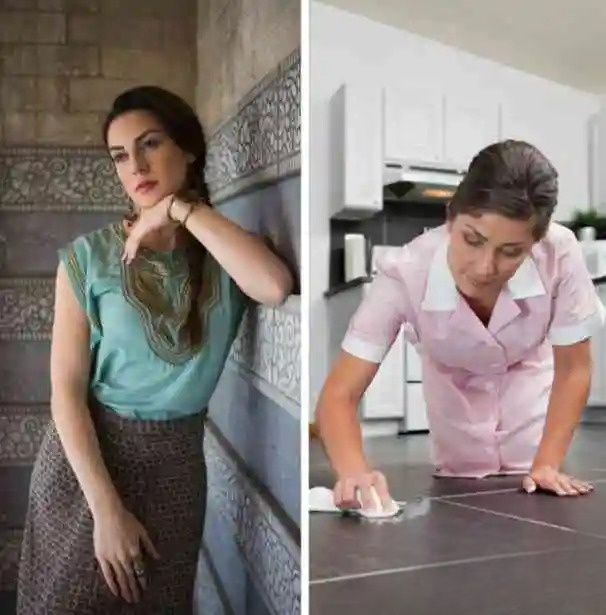
Choose tiles to make your eyes comfortable
Secretary-General Miao Bin explained that, effective August 1, 2005, China implemented mandatory labeling (3C) for three categories of decorative and renovation products, including porcelain tiles, primarily to test whether their radioactivity meets standards. Some ultra-white floor tiles are manufactured using additives that impart a "white" effect, and these additives contain radioactive substances, potentially contributing to radioactive and light pollution.
According to the regulations, the porcelain tiles that are subject to certification are products that comply with the GB-T400.1 standard and have a water absorption rate of less than or equal to 0.5. They are mainly polished tiles and antique tiles. Glazed tiles and some wall tiles are not included in this scope.
Finally, Secretary-General Miao Bin emphasized that the optimal visual environment should be one that is fully harmonious with the human eye in terms of color, light frequency, brightness, object shape, and movement. Therefore, when decorating a home, it's best to choose matte tiles; try using parquet flooring instead of tile in study rooms and children's rooms; if polished tiles are used, try to use low lights to avoid direct light or reflections that could affect the eyes; and because white and metallic tiles are highly reflective, they're not suitable for large areas of a home.
How to choose tiles? Teach you how to maintain tiles
Ceramic tiles are an indispensable part of home decoration, so how do you choose good tiles? How should you maintain tiles? How to clean them? This article will take you to learn about all aspects of choosing tiles, laying tiles, and maintaining tiles.
Ceramic tile purchase and maintenance 1. What are the characteristics of ceramic tiles?
Ceramic tiles are easy to buy and maintain, without having to worry about them getting wet or scratched by hard objects. They are also very affordable. However, they also have their disadvantages: they are hard and slippery underfoot, and they don't feel particularly warm.
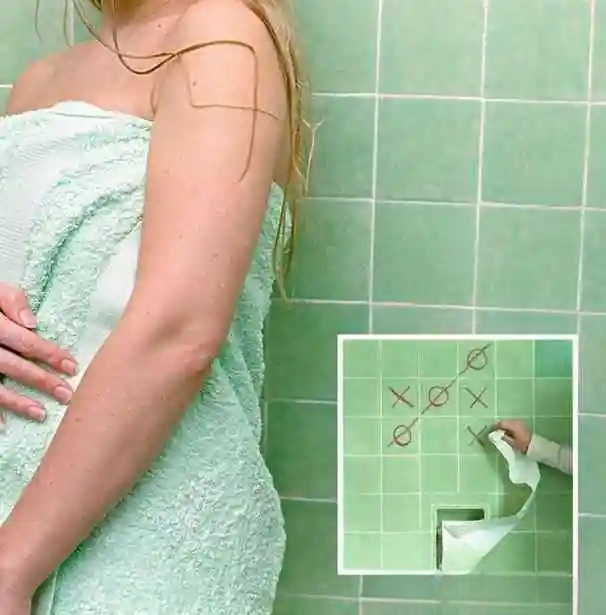
Mosaic: A unique brick, compact and colorful, it's widely used for small indoor floors and walls, as well as large and small outdoor walls and floors. Mosaics come in ceramic, marble, and glass varieties. They're easy to clean and are often found in bathrooms and restrooms.
Tile purchase and maintenance 2. How to clean stains on tiles?
1. If there is rust stain, squeeze fresh lemon juice and rub it on the rust stain repeatedly, then wash it with soapy water. You can also use vitamin C instead.
2. If it is stained with soy sauce, vinegar, etc., you can use toilet cleaner.
3. If the ink seeps in, use toothpaste.
4. Stains such as tea can be removed with a soda solution such as sodium hydroxide or potassium bicarbonate. Note: Use a scrub brush instead of steel wool when handling, otherwise it will scratch the surface of the tile.
Ceramic tile purchase and maintenance 3. How to choose and match tiles of different colors?
Beige series of tiles give the room a sense of grandeur, nobility and elegance;
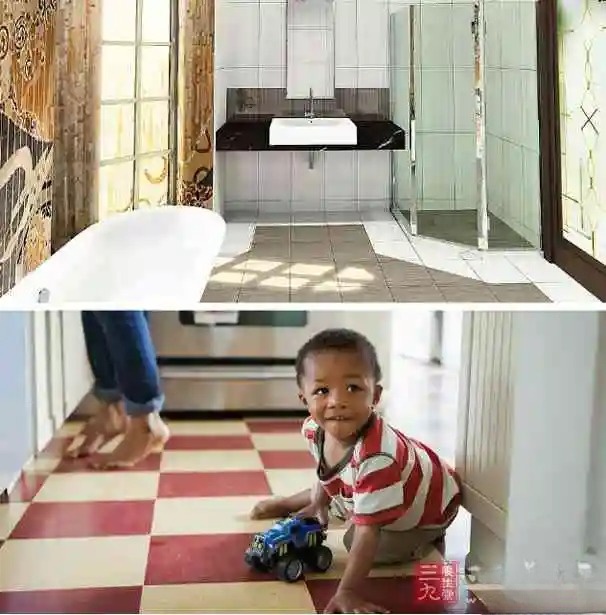
The stone color is both simple and natural, yet rich and profound. Earth-toned and terracotta tiles, laid on the living room and dining room floors, create a pastoral atmosphere of joy and comfort. Blue and green tiles easily evoke the vastness of the sky and the natural beauty of the grassland.
The red series of tiles make the floor look very special and have a gorgeous feel.
Gray tiles offer a touch of cultural elegance and natural beauty, while the contrast between black and white adds a sense of structure to the floor. Ceramic tiles are easy to purchase and maintain, without worrying about getting wet or easily scratched by hard objects. They're also very affordable. However, they also have their disadvantages: they're hard and slippery underfoot, and they don't feel particularly welcoming.
Ceramic tile purchase and maintenance 4. How to maintain ceramic tiles?
Method 1: Take a small spoonful of white wax and a small spoonful of white vinegar, mix them together, put them in a bottle, shake it before use, and this solution will work well when applied to tiles.
Method 2: If there is dirt in the tile joints, you can spray some bathroom cleaner, wait for a while, then brush it lightly and rinse it with clean water. If there are still residual stains, you can use bleach for washing water and wash it again.
Tile purchase and maintenance 5. What is a good way to repair tile falling off?
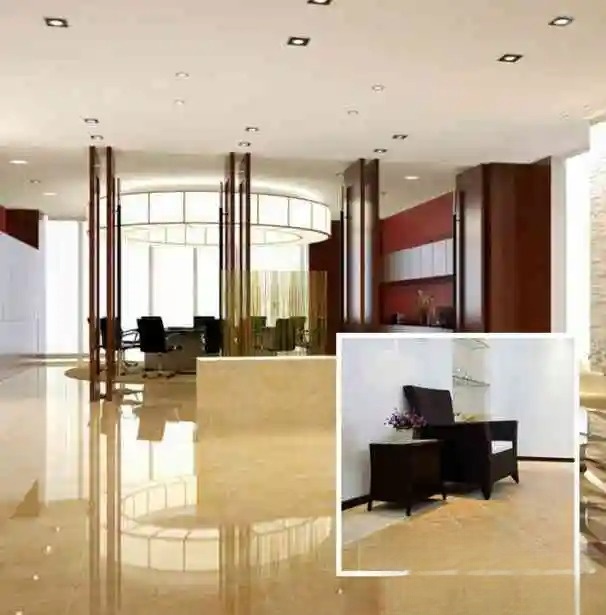
If the mortar is not loose and only the tiles are falling off, you can scrape off the mortar on the tiles, mix a little cement into 107 glue to make a paste, apply a thin layer evenly on the back of the tiles, and then press the tiles tightly to stick them firmly. If the mortar and tiles fall off together, first gently chisel some holes on the original base surface, then re-tile it with mortar mixed with 107 glue, and then press the fallen tiles on until the mortar hardens.
Ceramic tiles are easy to buy and maintain, without having to worry about them getting wet or scratched by hard objects. They are also very affordable. However, they also have their disadvantages: they are hard and slippery underfoot, and they don't feel particularly warm.
Tile selection and maintenance 6. Choose flooring or tiles?
1. Visual perception: Floors give people a good sense of affinity; tiles give people a hard feeling; ◇ Thermal insulation performance: Floors have advantages in thermal insulation, while tiles have relatively poor thermal insulation performance.
2. Personal protection: Ceramic tiles are more harmful to the elderly and children than floors.
3. Cleaning and Maintenance: Floors have cracks, so oil and water stains can get in, causing serious damage, while tiles are virtually harmless. Floors can appear somewhat monotonous. Tiles offer a wide variety of bright colors, patterns, and sizes, offering ample design possibilities and easily achieving results.
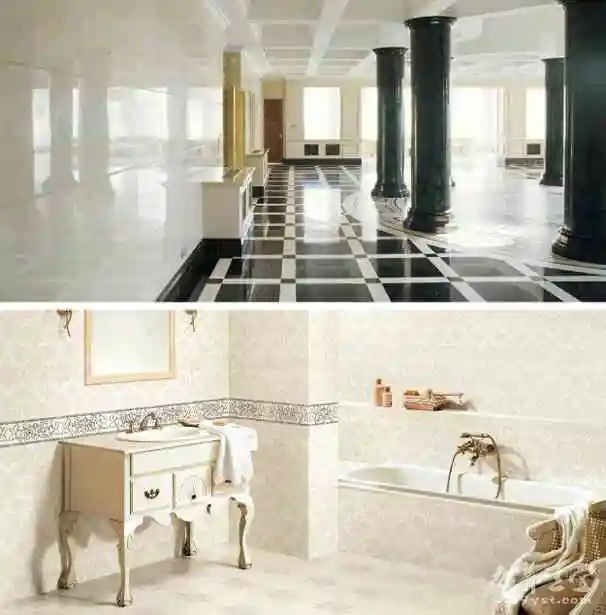
4. The floor saves worry, effort and money: the construction process is constant and has unified technical standards.
How to clean and maintain light-colored tiles
Ceramic tiles come in a variety of materials, including glazed, solid, polished, vitrified, and mosaics. Designers advise that smaller kitchens, where space is limited, can be enhanced with smaller tiles ranging from 5 to 13 cm. Generally, light-colored tiles enhance visual perception and reflect light, brightening small spaces. Therefore, you can choose from the ever-popular white or cooler tones like light green, sky blue, and light purple, which are bright, simple, and stylish.
However, tiles are often stained by grease, water rust, soap scum, etc., especially light-colored tiles will expose these problems early, so how to clean these beautiful light-colored tiles has become a problem that troubles people.
Method 1: Use a multi-purpose cleaning cream
Tiles often become stained by grease, water rust, soap scum, and other stains, especially in tile joints. To keep the tile surface clean without damaging its finish, use a multi-purpose cleaning paste. For cracks in the tiles, first use a toothbrush dipped in a little cleaning paste to remove any dirt. Then, apply a coat of waterproofing agent to the cracks with a brush. This will prevent water seepage and mold growth.
Method 2: Anti-fouling of the surface of vitrified tiles is the key
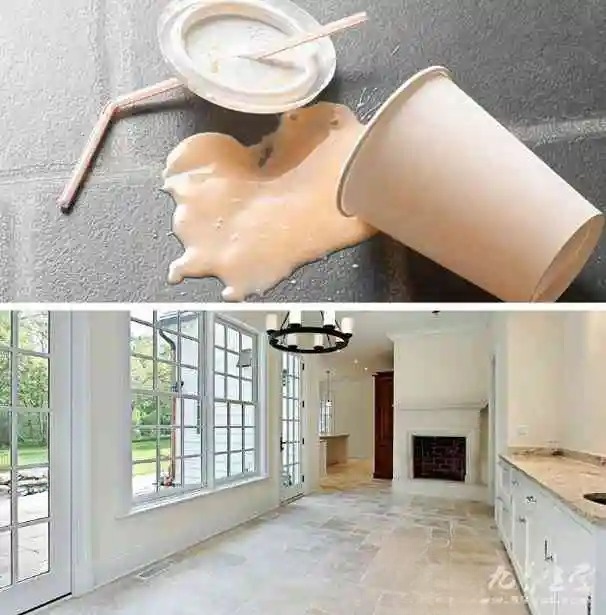
The only drawback of vitrified tiles is that after polishing, pores are exposed, allowing oil, dust, and other debris to easily penetrate. According to industry insiders, this is a recognized problem, but some manufacturers have, after research, solved it through new technologies. Many brands sell their products as qualified without undergoing anti-fouling treatment. Consumers are unaware of this and, if they are careless during installation, stains may occur. Consumers should inquire clearly at the time of purchase. Vitrified tiles that have not been anti-fouling treated require waxing; standard floor wax will suffice. Before installation, to prevent damage to the tile surface during construction, cover it with a non-discoloring material such as a woven bag.
For daily cleaning and maintenance of vitrified tiles, first thoroughly clean all stains. If there are any sticky or adhesive stains, use a neutral detergent and a 3M scouring pad to remove them. Apply floor cleaner (follow the instructions) to the tiles and rub the stains clean with a waxer. Then, pour water-based wax onto a clean, dry mop and evenly apply the wax to the tiles.
After waxing, allow the tiles to dry naturally before walking on them. You can also use a fan to assist with drying. Generally, it takes 8 hours for the tiles to fully dry after waxing. If you need to move heavy objects, wait until the wax is completely dry before moving them. This will help maintain the tiles' glossy finish. If the tiles turn yellow after multiple applications and need to be re-waxed, use a wax remover. To do this, apply the wax remover directly without adding water. Sprinkle it evenly over the area to be dewaxed for about 10-15 minutes. Once the wax remover has penetrated the tiles, wet them with water to completely remove the wax; otherwise, the re-waxing process will not produce a glossy finish. After removing the wax, follow the cleaning and maintenance steps above.
Method 3: Add tiles to old tile surface
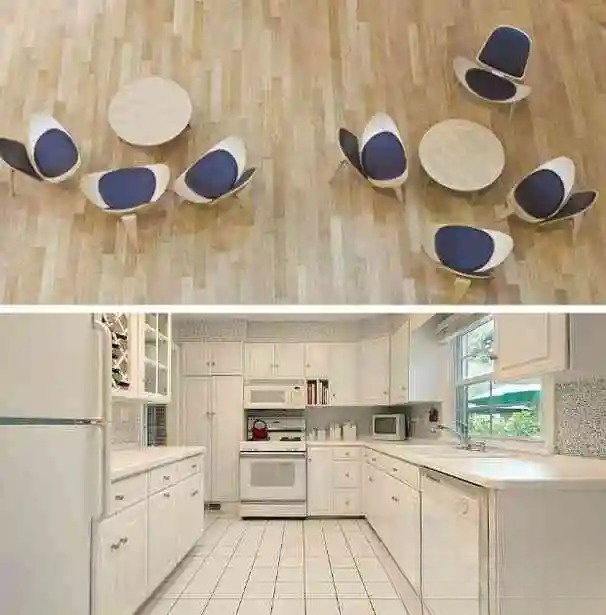
Renovating old tiles generally requires scraping away all the tiles, which is very labor-intensive. If you want to add new tiles over old tiles, cement mortar is not suitable for this purpose. In this case, you must use a resin-based stone adhesive, which is resistant to grease and stains on the tiles and has better bonding strength.
Daily care for light-colored tiles requires some tips. Clean with water and dishwashing liquid or soap. Adding a small amount of ammonia and turpentine to soap can enhance the finish. If tea or other household items get stuck to the tiles, scrub them clean immediately, using appropriate cleaning products if necessary. Scratches can be repaired by applying toothpaste and wiping with a cloth. Periodically use a decontamination cream to remove dirt from the cracks between tiles, and apply a waterproofing agent to the cracks to prevent mold growth.
By mastering the above tips, I believe the light-colored tiles in your home will remain "eternally young".
Teach you tips on tile maintenance
Tip 1: When mopping the floor daily, use dry mops as much as possible and avoid wet mops. For areas that are particularly dirty or stained, use household detergents such as dishwashing liquid, laundry detergent, or a stain remover. Vitrified tiles can be wiped directly with a dry cloth or dampened with water.
Tip 2: Cleaning tiles with soap or a little mixture of ammonia and turpentine can make the tiles cleaner and brighter.
Tip 3: The gaps between the tiles can be cleaned with detergent paste from time to time, and then a layer of waterproofing agent can be brushed into the gaps with a brush to prevent mold growth.
Tip 4: Minor scratches: Apply toothpaste around the scratch, rub repeatedly with a soft, clean, dry cloth, then apply a small amount of floor wax. Once dry, buff with a clean cloth to achieve a bright, like-new finish. If the damage is severe, replace the floor immediately or have it professionally repaired.
Tile maintenance and care advice
(1) Daily maintenance
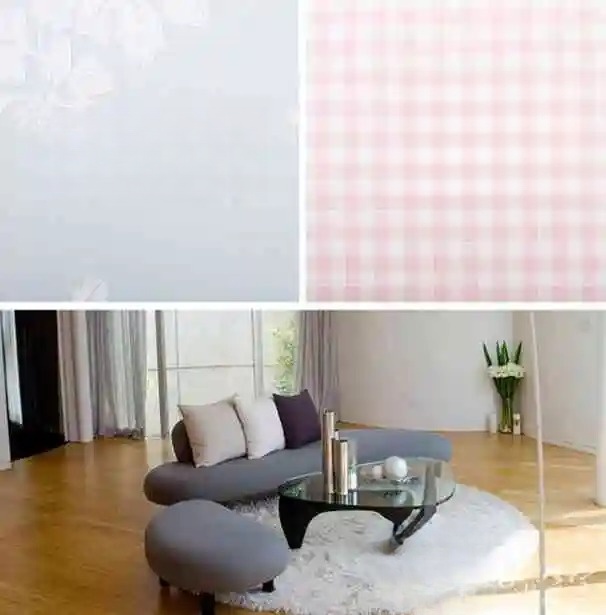
1. In daily use, avoid using sharp metal objects, glass ceramics, nails and other hard objects to knock or rub the ground. Do not drag heavy objects back and forth on the ground to avoid scratching the glaze and affecting the appearance.
2. When mopping the floor daily, try to use a dry mop and use a wet mop less often.
3. If there are scratches on the brick surface, you can apply toothpaste on the scratch and wipe it with a dry cloth to repair it. If the local damage is serious, it should be replaced and re-laid in time.
4. The gaps between bricks can be cleaned with a cleaning paste from time to time, and then a layer of waterproofing agent can be brushed in the gaps to prevent mold growth.
(2) Cleaning and cleaning agents
For daily cleaning of tiles, use detergent or soap. A mixture of soap, a little ammonia, and pine oil can make them more shiny. If tea or other daily items get stuck on the tiles, scrub them clean immediately and, if necessary, use appropriate cleaning products.
Uncover the secrets of tiles: six essential knowledge about tiles

A small piece of tile holds a wealth of essential knowledge. What are the characteristics of tile? How should it be maintained? How should different colored tiles be selected and matched? What's the best way to repair chipped tiles? How should stains be cleaned from tiles? Should you choose flooring or tile? Then follow Chongqing Kangti Luo to uncover the secrets of tile. Find the answers to all these questions in this article!
1. What are the characteristics of ceramic tiles?
Ceramic tiles are easy to buy and maintain, with no worries of getting wet or scratched by hard objects. They are also very reasonably priced. They have low water absorption, high wear resistance, uniform size, acid resistance, no radiation, and zero pollution.
Mosaic: A unique brick, compact and colorful, it's widely used for small indoor floors and walls, as well as large and small outdoor walls and floors. Mosaics come in ceramic, marble, and glass varieties. They're easy to clean and are often found in bathrooms and restrooms.
2. How to choose and match tiles of different colors?
Beige series of tiles give the room a sense of grandeur, nobility and elegance;
The stone color is simple and natural, yet rich and profound. Earth-colored and terracotta tiles, when laid on the living room and dining room floors, can make people feel the joy and comfort of pastoral style. Blue and green tiles easily remind people of the vastness of the sky and the natural beauty of the grassland.
The red series of tiles make the floor look very special and have a gorgeous feel.
The gray series of tiles has more cultural taste and natural scenery; the contrast between black and white can increase the layered structural sense of the ground.
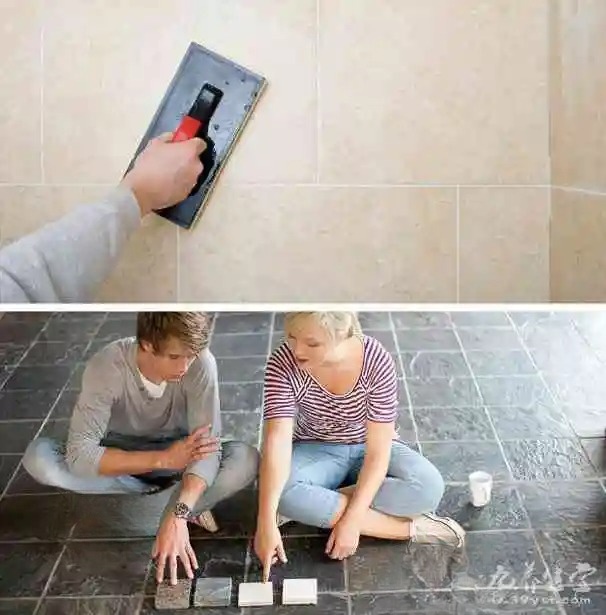
3. How to maintain tiles?
Method 1: Take a small spoonful of white wax and a small spoonful of white vinegar, mix them together, put them in a bottle, shake it before use, and this solution will work well when applied to tiles.
Method 2: If there is dirt in the tile joints, you can spray some bathroom cleaner, wait for a while, then brush it lightly and rinse it with clean water. If there are still residual stains, you can use bleach for washing water and wash it again.
4. What is a good way to repair tiles falling off?
If the mortar is not loose and only the tiles are falling off, you can scrape off the mortar on the tiles, mix a little cement into 107 glue to make a paste, apply a thin layer evenly on the back of the tiles, and then press the tiles tightly to stick them firmly. If the mortar and tiles fall off together, first gently chisel some holes on the original base surface, then re-tile it with mortar mixed with 107 glue, and then press the fallen tiles on until the mortar hardens.
5. How to clean stains on tiles?
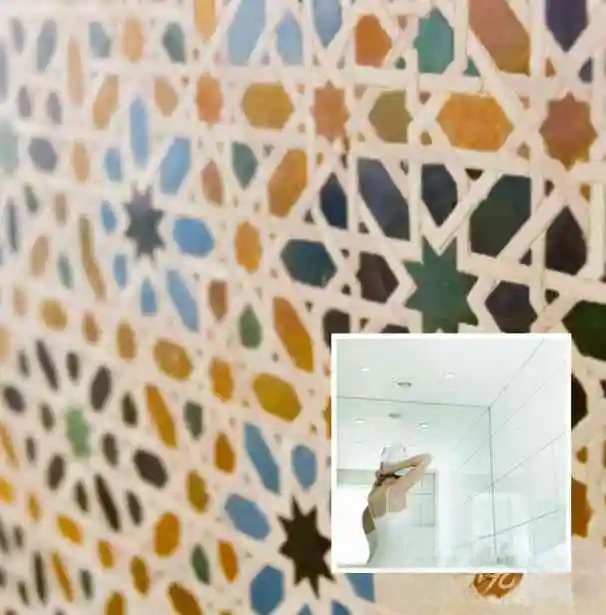
1. If there is rust stain, squeeze fresh lemon juice and rub it on the rust stain repeatedly, then wash it with soapy water. You can also use vitamin C instead.
2. If it is stained with soy sauce, vinegar, etc., you can use toilet cleaner.
3. If the ink seeps in, use toothpaste.
4. Stains such as tea can be removed with a soda solution such as sodium hydroxide or potassium bicarbonate. Note: Use a scrub brush instead of steel wool when handling, otherwise it will scratch the surface of the tile.
6. Choose flooring or tiles?
The biggest advantage of having wood flooring in your home is comfort, but it's also expensive. It's also difficult to maintain and requires frequent waxing. Ceramic tiles are popular for five main reasons: easy to clean and maintain, they don't harbor dirt or air pollutants; they have a long lifespan, typically lasting 10-20 years; they're fireproof, waterproof, and corrosion-resistant; they're environmentally friendly; and they come in a variety of designs.
If you want maximum convenience, then choose floor tiles. Chongqing Kangti Luo Building Materials Co., Ltd. sells floor tiles in a variety of sizes, colors, and patterns. Piece by piece, you can create your own vision for family life.
Avoid choosing dark-colored tiles for home decoration
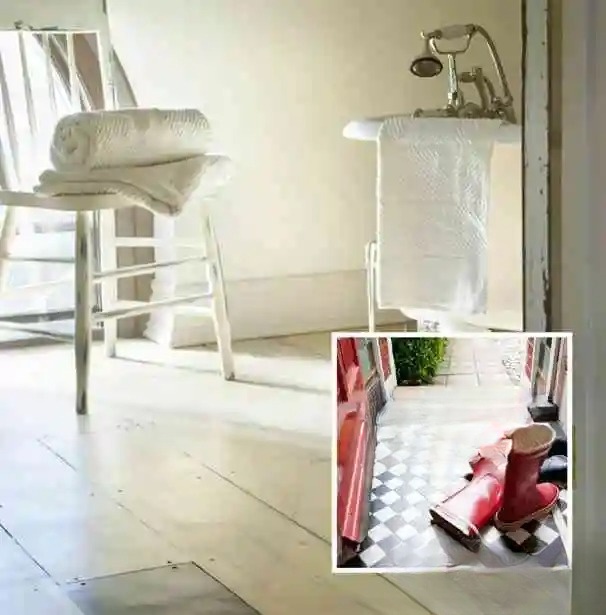
Ceramic tiles are an essential building material for most home renovations. However, like natural stone, the radiation emitted by ceramic tiles has long been a major concern. Glazed tiles, vitrified tiles, dark and light colors—there are many different types of ceramic tiles on the market. Which type of tile emits the most radiation, and how should you choose when renovating?
There are many types of tiles on the market, such as glazed tiles, vitrified tiles, dark colors, and light colors. Which type of tiles has greater radiation? How should we choose when decorating?
Among these, glazed tiles require more attention. Glazed ceramic tiles are tiles with a layer of glaze applied on the base of the tiles. The surface of the tiles is diverse in color and rich in patterns and designs. Due to the poor wear resistance of the glaze, glazed tiles are mostly used for kitchen and bathroom walls in home decoration. The raw materials of glazed ceramic tiles mostly come from natural minerals, mainly potassium-containing minerals such as feldspar, mica, quartz, etc. These minerals contain certain radioactive substances such as uranium and potassium. These radioactive substances are still radioactive after physical and chemical processes such as crushing, high temperature, and sintering. As for the glaze of ceramic tiles, experts in indoor environmental testing said that in order to make the surface of the glazed tiles smooth and easy to clean, manufacturers added zircon sand with high radioactivity to the glazed tile materials, which increased the radioactivity of the glazed tiles.
Sun Peidu, technical director of Qingzhou Decoration's Beijing branch, stated that dark-colored glazed tiles are relatively the most radioactive. The darker the tile, the more radioactive material it contains, and the greater its radioactivity. Specifically, among all glazed tiles, red is the most serious, with tiles like General Red and Azalea Red having higher radioactivity levels than other colors.

Concerns about whiter tiles emitting more radiation are primarily due to the inclusion of zirconium in the tiles. However, Sun Peidu stated that exceptionally white tiles are now rare on the market. This is not scientifically sound for home decoration, the dazzling white color is detrimental to weight loss, and they are also not stain-resistant. Consequently, manufacturers rarely bother producing these tiles anymore.
However, it's important to emphasize that the radiation levels of ceramic tiles are relative. Generally speaking, the radiation levels of qualified, branded ceramic tiles are reliable, so consumers shouldn't panic. When decorating your home, simply avoid extensive use of dark-colored tiles, especially red glazed tiles. This will both minimize radiation issues and avoid the oppressive feeling that dark-colored tiles can create. When purchasing, be sure to request a radiation test report from the retailer and include it in the contract for future legal action.
Do you know how to choose bathroom tiles? Texture and color are also important
How to choose high-quality bathroom tiles? Consumers often see a wide variety of bathroom tiles in various styles and colors in the building materials mall. However, they don't know which one is really suitable for them. Below, let's take a look at the tips for buying tiles.
The walls of the waterproof bathroom must be covered with tiles (or glass tiles) that are highly waterproof, corrosion-resistant and mildew-resistant; Choice of bathroom floor tiles: It is best to use anti-slip tiles with raised patterns for the floor.
texture
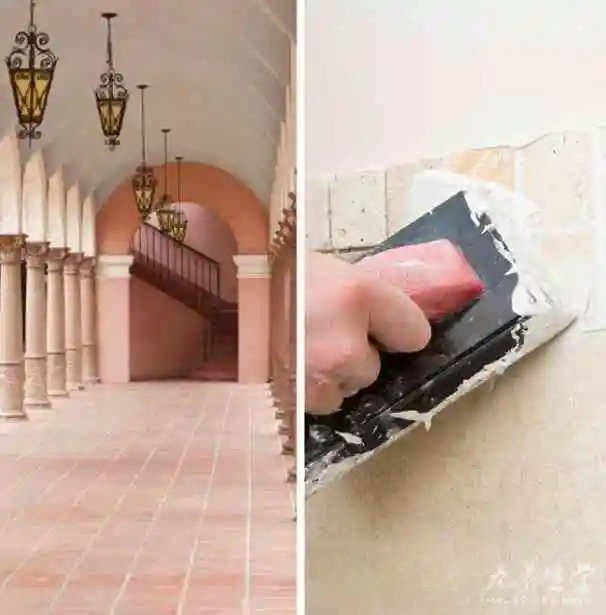
The surface of ceramic tiles is usually smooth and shiny. You can observe from the side whether the tile surface is flat and whether there are uneven pinholes. At the same time, you can knock on the tile to listen for the crisp sound. The crisper the sound, the higher the density and hardness of the tile.
Glossy tiles are good and can bring a bright visual sense to the space. However, the bathroom is a place where water is often used for washing and rinsing, especially when taking a shower. Tiles that are too smooth can easily cause slips due to rainwater. Therefore, when purchasing tiles, you must consider the smoothness of the tiles. Rough tiles are not necessarily of poor quality.
size
The bathroom is not a large space. In general apartment decoration, the space of the bathroom is very small. Another point is that the tiles in the bathroom are usually pasted on the entire wall. From the perspective of visual psychology, if large geometric patterns are used in a small space, the space will appear even smaller. Therefore, the tiles for the bathroom should not be too large. Generally, 20 cm tiles are the most suitable.
color
The decoration of the bathroom is mainly based on a simple decoration style. The color should be designed as fresh as possible to bring a fresh and comfortable visual sense and increase the sense of openness of the space. Therefore, the color selection of bathroom tiles should be mainly light colors or blue and green.
Water absorption
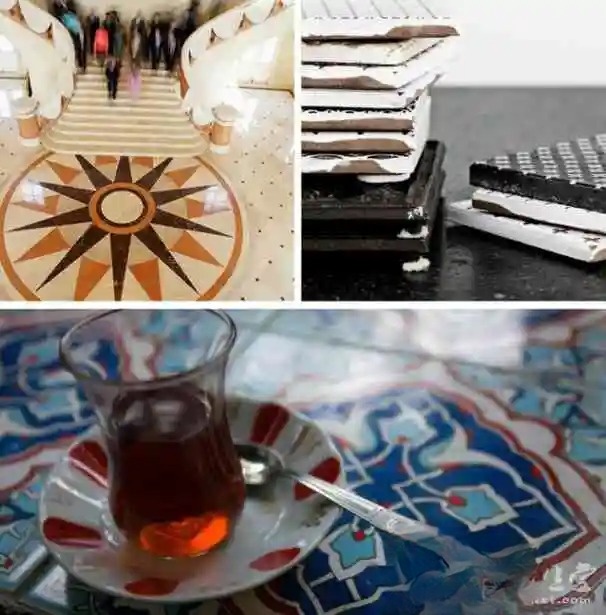
When choosing bathroom tiles, the first thing to consider is their water absorption rate. Generally speaking, high-quality tiles have low water absorption, allowing them to dry quickly. If the tile doesn't have a water absorption rate indicated, drop tea or water on the back of the tile and observe how the water spreads after a few minutes. The less water is absorbed, the lower the water absorption rate and the better the quality.
The choice of bathroom tiles may seem simple, but there is a little knowledge involved. Whether it is the color or the quality of the tiles, there are many things to pay attention to.
Meike Decoration recommends that it is important to choose non-slip and wear-resistant tiles in the bathroom, which is also for your own safety.
Tips for daily maintenance of home bathroom tiles
Indoor bathroom tiles are often non-slip, and most bathroom tiles are painted in light tones like white, yellow, and blue. Therefore, care must be taken when maintaining these tiles. Damaging the color of the tiles can negatively impact the overall visual experience. Maintaining bathroom tiles primarily involves two key aspects: maintaining the tile's color and ensuring the tiles are leak-proof and mildew-resistant. Here are some tips for maintaining bathroom tiles.
Trick 1: Anti-seepage and anti-mildew measures for tiles
Bathroom walls are often tiled. To keep them clean and shiny, use a multi-purpose cleaning paste. As for the crevices between the tiles, first use a toothbrush with a little cleaning paste to remove scale, then apply a coat of waterproofing agent with a brush. This not only prevents seepage but also prevents mold growth.

Trick 2: Clean the glass with a clever method
Smooth mirrors and windows can become watermarked and blurry due to prolonged contact with water. To help, spray glass cleaner in a large X-shape across the entire glass. Then, fold a wrung-out rag and rub it in a circular motion. Wait until the glass is 70% dry, then wipe it again with a dry cloth. You can also use old newspaper; the ink in the paper will restore the glass's shine and remove stubborn stains.
Trick three: Perfect faucet removal
Faucets (and showerheads) are often contaminated with various types of body wash, shampoo, and dish soap, which can dull the chrome finish. Kunming Decoration Network advises that you spray a soft cotton cloth with a neutral detergent and gently wipe the faucet once a week. Avoid using acidic or abrasive detergents or wire brushes to "torture" the faucet.
Tip 4: Make a whitening mask for the toilet
First put an appropriate amount of water in the toilet, clean it with a toilet brush, then pour in about 5 to 10 ml of detergent or hydrochloric acid solution, apply it evenly with a brush and scrub it. If the dirt is heavy, pour a little more detergent and soak it, then scrub it until it is clean, then rinse it with clean water.

Trick 5: Make ceramics look as bright as new
Another convenient and environmentally friendly way to clean bathroom fixtures is to use white vinegar and lemon peel. First, scrub the surface of the fixture clean, then wipe it with a soft cloth dipped in a little white vinegar or lemon peel. In just a few moments, the fixture will be as bright as new and emit a fresh fragrance.
Trick 6: Create an indoor "oxygen bar"
"Negative ion" air is popular nowadays. You can grow some shade-loving plants, or buy an oxygen bar brick. An oxygen bar brick similar to a mural can refresh the air like plants, and does not require maintenance. It can also decorate the bathroom and turn it into an "oxygen bar". You might as well give it a try.
Tip 7: Create a light and elegant fragrance
There are many air fresheners available on the Kunming renovation market, and you can choose according to your preferences. Imagine how relaxed and comfortable guests will feel when they use bathroom fixtures, surrounded by a delicate fragrance and listening to soothing music. Alternatively, the simplest way to purify bathroom air is to place a cup of balsamic vinegar or an opened box of cooling oil in the bathroom; odors will naturally disappear.
How to choose tiles

Faced with a wide variety of tiles in stores, how should consumers choose? A must-read for decoration: tile knowledge.
How to choose polished tiles
1. Diagonal ratio size
Place two tiles of the same type face to face, overlap them, align the four corners, and rotate one of them. The best one is the one with the same dimensions on all four sides. This method is particularly suitable for testing tiles with smooth surfaces.
2. Check the flatness
Place two tiles of the same type face-to-face, overlap them, align their corners, and rotate one of them. The one that rotates easily is of poor quality, while the one that rotates less easily is of good quality. This method cannot be used to test antique tiles. The distinctive feature of antique tiles is the random variations in surface color and pattern, and the surface can be uneven.
3. Look at the water absorption rate
Water absorption is an important indicator of tile quality. Pour a small cup of water on the back of the tile. The faster the water disappears, the higher the water absorption, the looser the texture, and the weaker the strength. Conversely, the opposite is true.
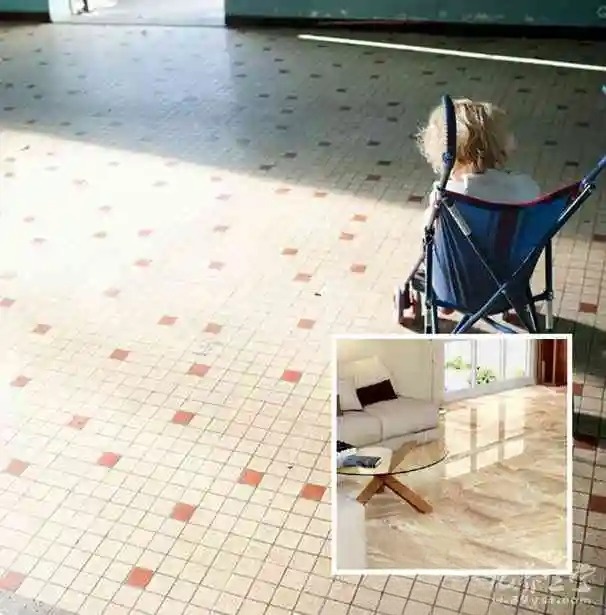
4. Look at the finish
This is an important indicator for testing the quality of polished tiles. Clean the protective wax on the surface of the polished tile with a soft cloth or reagent, place it under light or sunlight, and observe it at a 45-degree angle. The brighter the surface, the better.
Ceramic tiles are roughly divided into five categories according to their craftsmanship and characteristics
1. Glazed tiles
These are bricks whose surface has been glazed. Based on the raw materials, they can be divided into two types: Ceramic glazed tiles, which are made from fired clay, have a high water absorption rate and relatively low strength. Based on the local soil type, there are red clay and white (yellow) clay. Porcelain glazed tiles, which are made from fired porcelain clay, have a low water absorption rate and relatively high strength. Their main feature is that the back is off-white. Based on the gloss, they can also be divided into the following two types: glossy glazed tiles and matte glazed tiles.
Second, full body tiles
Full-body tiles are unglazed, and the material and color on both sides are the same, hence the name. Full-body tiles are wear-resistant. While there are also varieties like full-body tiles with infiltrated patterns, their patterns and colors are relatively inferior to those of glazed tiles. They are rarely used on walls, and most anti-slip tiles are full-body tiles.
3. Polished tiles
Polished tiles are a type of tile made by polishing the surface of a solid brick to create a bright finish. A derivative of solid brick, polished tiles have a smooth, polished surface compared to the rough surface of solid bricks. Their hard, wear-resistant properties make them suitable for most indoor spaces, except bathrooms, kitchens, and other indoor spaces. By utilizing a patterned infiltration technique, polished tiles can be created to create various stone and wood-like effects.
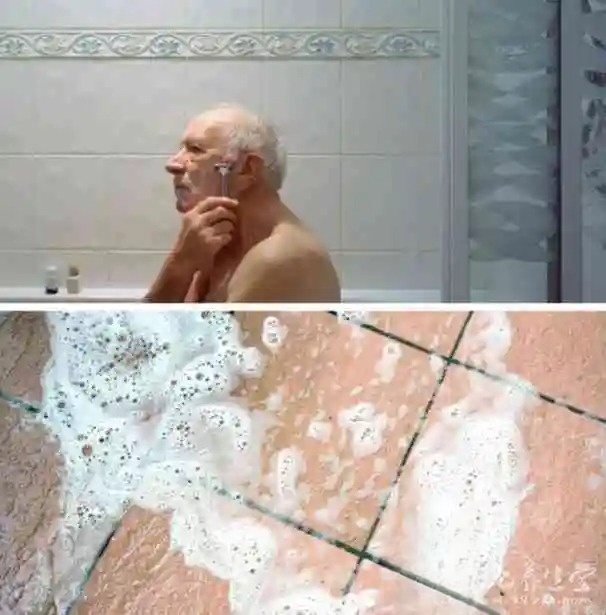
4. Vitrified tiles
This is a reinforced polished tile that contains a high proportion of quartz sand (the main raw material for making glass) in addition to porcelain clay. It is fired at high temperatures. It is harder and more wear-resistant than polished tiles, and has a better finish.
5. Mosaic
It is a special brick, which is generally composed of dozens of small bricks to form a relatively large brick. It is divided into ceramic mosaic, marble mosaic and glass mosaic.
Tips for choosing tiles for the kitchen
1. Generally, the kitchen is relatively small, with windows, doors and cabinets, and the net area is relatively small. In order to avoid waste and maintain the coordination of space, small-sized tiles should be selected. This way, there will be less waste in paving, and many inconveniences caused by construction such as cutting large-sized tiles can be avoided.
Second, the kitchen is a hot environment, so the tiles should be light and cool in color, such as white, light green, light gray, etc. Such colors can make people feel the breath of spring and coolness under high temperature conditions. In addition, light colors can make people feel that the space is expanding and extending, avoiding the dull and depressing feeling of dark colors in a small space.

3. Because there are many cabinets in the kitchen, tiles should not be laid on the back of the cabinets, because it is a complete waste to lay tiles in an area that is completely blocked by cabinets.
4. It is best to lay matte tiles. Matte tiles may make people feel difficult to clean, but this is actually wrong. Good quality matte tiles are not only very easy to clean, but their delicate and simple luster can also show the owner's elegant aesthetics, making the kitchen more harmonious and natural.
5. Avoid using tile waistlines, because using waistlines in a small space will make the space look messy and cumbersome, but you can appropriately lay a few flower pieces for embellishment to make the kitchen look lively and romantic.
Tips for choosing tiles for the living room
The living room is the public area of the house and also an important area of the house, so the choice of floor tiles is very important.
1. Specifications of polished tiles
If the living room area is more than 30 square meters, you should choose 80*80 bricks. If it is smaller than this area, the specifications should be below 60*60, but not smaller than 40*40.
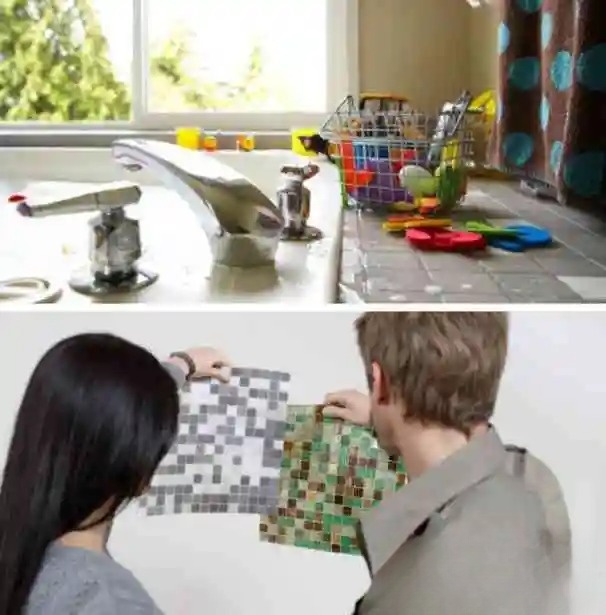
The large size can make the room spacious and elegant, and provide a wide view.
However, if large-sized tiles are laid on a small floor, the room will look out of proportion, just like a thin person wearing oversized clothes. Conversely, if small-sized tiles are laid on a large floor, the room will appear crowded and cumbersome. In short, good shoes are the ones that fit your feet.
Second, color
The indoor space should be spacious and bright, making people feel relaxed and comfortable. Therefore, light colors are generally suitable, such as white, light beige, solid colors or slightly patterned ones. For owners with high hygiene requirements, choosing solid colors can better reflect the owner's elegance, but it requires more time and effort because solid colors are not resistant to dirt and need frequent cleaning. For those who are busy with work and like to spend their free time sleeping, surfing the Internet, it is best to choose tiles with slight patterns or particles.
Next, consider the material. Vitrified stone is preferred because it is wear-resistant, bright, and easy to clean. Some people also prefer antique tiles, which offer rich colors and reflect individuality, but the colors are often darker and difficult to clean. Stone is best avoided because it is not only expensive and monotonous in color, but also often radioactive, with a low surface finish and wear resistance. These materials are often used in large public spaces.
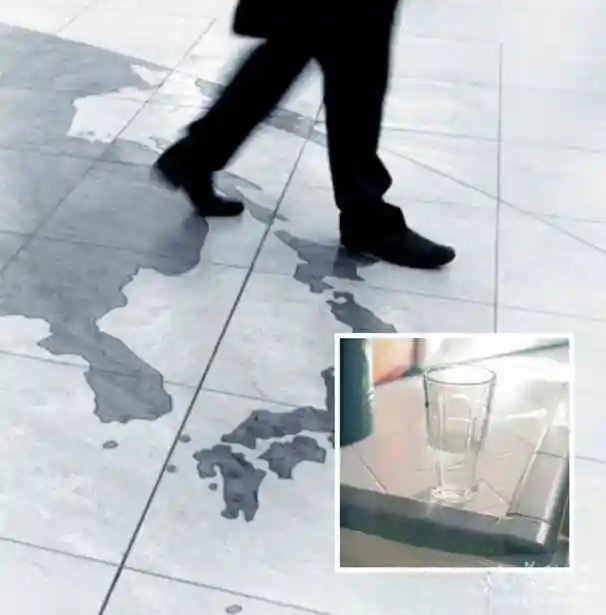
3. It is best not to decorate the living room floor
Simplicity and flow are the eternal themes. Xuanguan and parquet are outdated and superfluous – usually bad ideas from renovation companies.
Skirting lines need to be made because the walls are generally painted, and the part where the paint connects to the ground is often in contact with the feet of living room furniture and people's feet, which is easy to get dirty and damaged. Using skirting lines made of vitrified tiles can avoid this problem and make the living room more beautiful.
The upper end of the baseboard should be ground into a quarter circle or a 45-degree bevel, and the processed surface should be polished.
Source: Sanjiu Health Hall